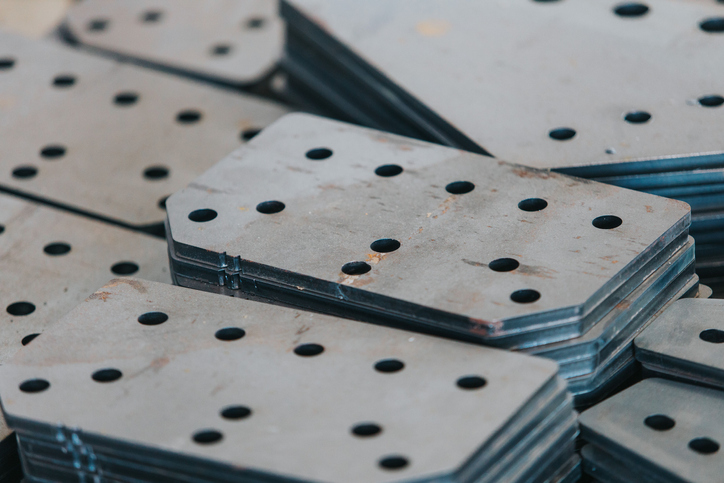When it comes to protecting and enhancing the appearance of metal parts, E-Coating and Anodizing are two popular industrial processes. Both techniques offer unique benefits and are suitable for different applications, making it essential to understand their differences and how to choose the right one for your needs. This article delves into the features of both finishing processes, as well as highlights the differences between e-coating vs anodizing.
What is E-Coating?
E-Coating, or Electrophoretic Deposition (EPD), is simply the application of a protective coating to a metal part. This protective coating is electrically charge, and its application usually involves submerging the metal part in a bath. The immersion process creates a uniform, corrosion-resistant layer that enhances the durability, as well as appearance of the part.

Courtesy: finishingandcoating
E-Coat Process
Vital steps in this process are as follows:
- Surface Preparation: Clean the metal part thoroughly to remove any dirt, oil, or contaminants before the process begins. This step typically involves degreasing, acid cleaning, and rinsing.
- Pretreatment: After cleaning, treat the metal surface with a phosphate or zirconium conversion coating to enhance adhesion and improve corrosion resistance.
- Electrophoretic Deposition: Next, submerge the metal part in an E-Coating bath containing a water-based paint solution. Then, apply an electrical current, which causes the charged paint particles to migrate and adhere uniformly to the metal surface.
- Rinsing: On attaining the desired coating thickness, remove the part from the bath and rinse to remove any excess paint and ensure a smooth finish.
- Curing: The final step entails curing the metal part in an oven at a high temperature. This results in the hardening and bonding of the coating to the metal surface.
Benefits of E-Coating
- Uniform Coverage: E-Coating ensures consistent coverage even in hard-to-reach areas, making it ideal for complex shapes.
- Corrosion Resistance: The protective layer formed during e-coating significantly enhances the metal’s resistance to corrosion.
- Aesthetic Appeal: Can deploy a variety of colors, providing both protection and aesthetic value.
What is Anodizing?
Anodizing is an electrochemical process that converts the surface of a metal part, typically aluminum, into a durable, corrosion-resistant oxide layer. Unlike e-coating, anodizing does not involve the application of a separate material. Rather, it enhances the natural oxide layer on the metal surface. This is one major difference between e-coating vs anodizing.
The Anodizing Process
- Surface Preparation: Similar to e-coating, cleaning and preparing the surface of the metal part is necessary before anodizing. This step may include alkaline cleaning, acid etching, and rinsing to remove impurities and ensure an even oxide layer.
- Anodizing: Next, submerge the metal part in an electrolytic bath containing an acid solution, typically sulfuric acid. Then, apply an electrical current, which causes the metal surface to oxidize and form a thick, porous oxide layer.
- Coloring: Applying dye to the porous oxide layer to achieve various colors is possible. Generally, this is an optional step in line with specific requirements of the part.
- Sealing: After Anodizing and coloring, the final step entails sealing the part in hot water or steam to close the pores and enhance its corrosion resistance and durability.

Courtesy: lightmetalage
Benefits of Anodizing
- Enhanced Durability: Anodizing creates a tough, wear-resistant surface that is ideal for applications where abrasion resistance is critical.
- Corrosion Resistance: The oxide layer formed during anodizing provides excellent protection against corrosion, particularly for aluminum parts.
- Aesthetic Versatility: The ability to dye the anodized layer in a variety of colors offers both functional and decorative benefits, making it a popular choice for architectural and consumer products.
Differences Between E-Coating vs Anodizing
While both e-coating and anodizing provide protective finishes, they differ in several key aspects.
| Parameter | E-Coating | Anodizing |
| Material Suitability | Suitable to a wide range of metals including steel, aluminum, and zinc. | Generally limited to aluminum and its alloys. |
| Process Nature | Involves the application of an external coating material to the metal. | Whereas, anodizing modifies the existing metal surface by converting it into an oxide layer. |
| Aesthetic Options | Different color options are available using paint solutions. | Color options are available by using dyes that penetrate the oxide layer. |
| Corrosion Resistance | Provides some level of corrosion resistance. | Corrosion resistance from anodizing is superior vs e-coating. Thus, ideal for highly corrosive environments. |
| Surface Hardness | Durable surface, but not high abrasion resistance. | Creates a harder surface. |
Selecting Between E-Coating vs Anodizing
Choosing between e-coating vs anodizing depends on several factors as the following sections highlight.
Material Considerations for E-Coating vs Anodizing
If working with aluminum, anodizing might be the preferred choice due to its compatibility and superior corrosion resistance. For steel or mixed metals, e-coating offers greater versatility.
Aesthetic Requirements
For applications where appearance is crucial, both processes offer color options. However, the choice may depend on whether you prefer the dyed finish of anodizing or the paint-based finish of e-coating.
Environmental Conditions
In highly corrosive environments, anodizing provides excellent protection for aluminum, while e-coating is effective for a broader range of metals.
Surface Durability of E-Coating vs Anodizing
If surface hardness and wear resistance are critical, then anodizing offers a tougher finish. Thus, making it suitable for applications such as architectural components or consumer electronics.
Making the choice on the right coating process for your application involves several considerations. At ITD Precision, we offer expert advice along with industry-leading solutions to meet your requirements. Contact us today to learn more about how we can help you protect and enhance your metal components.


